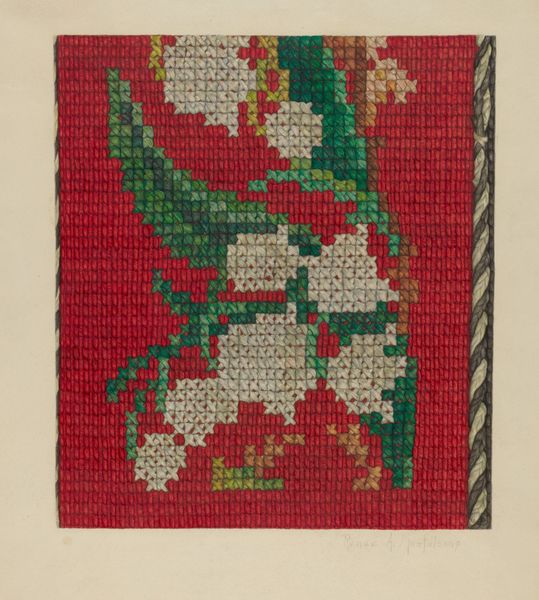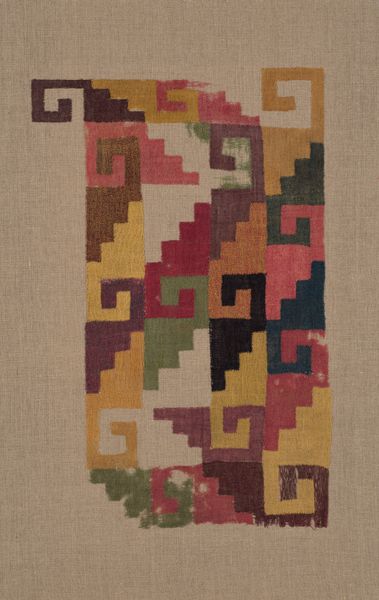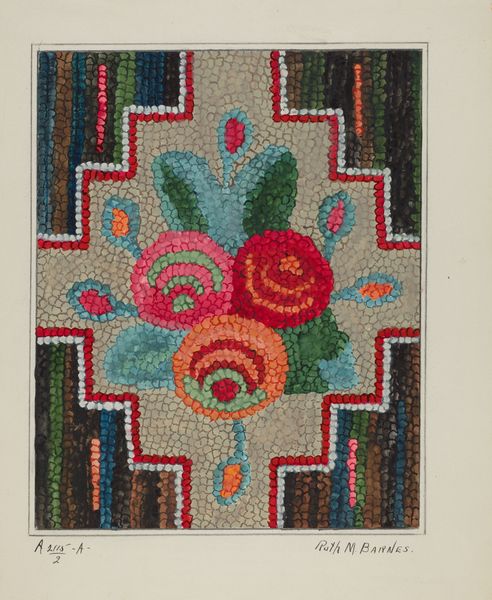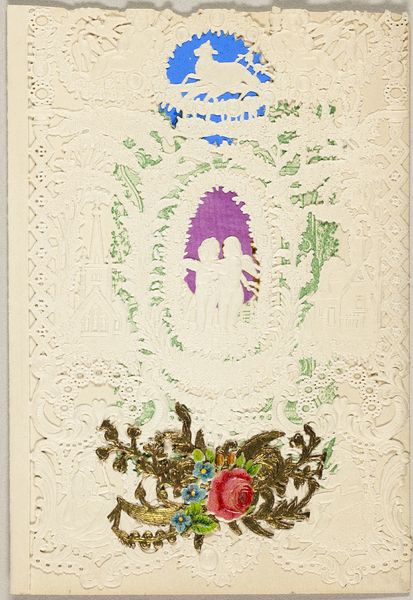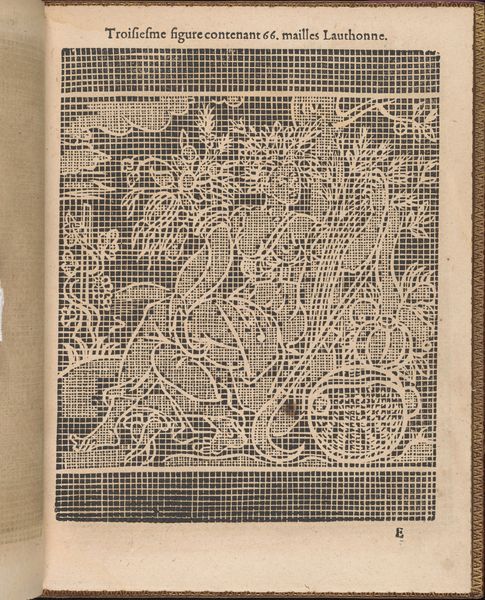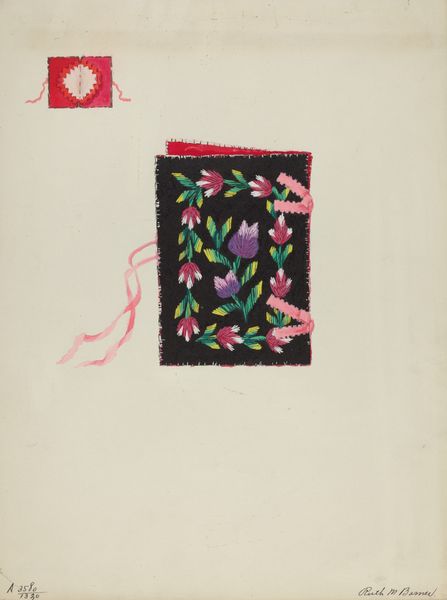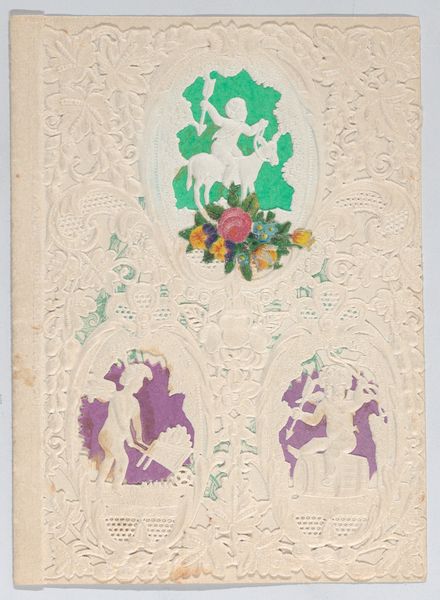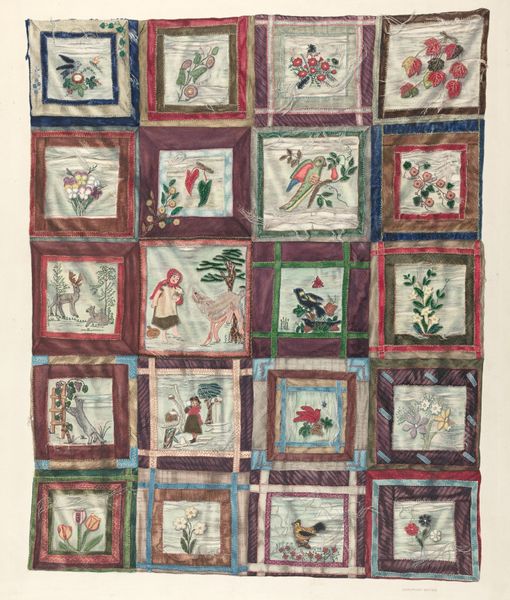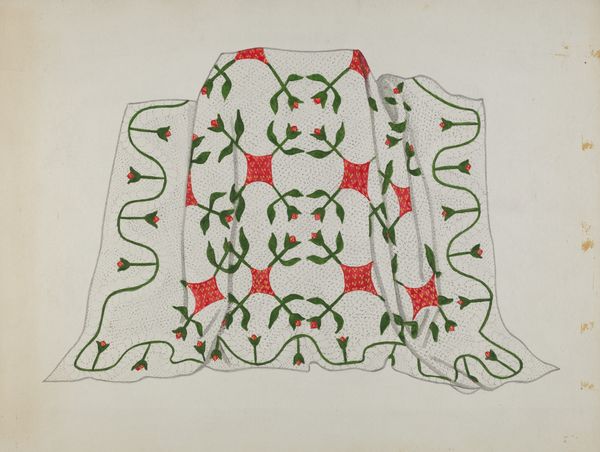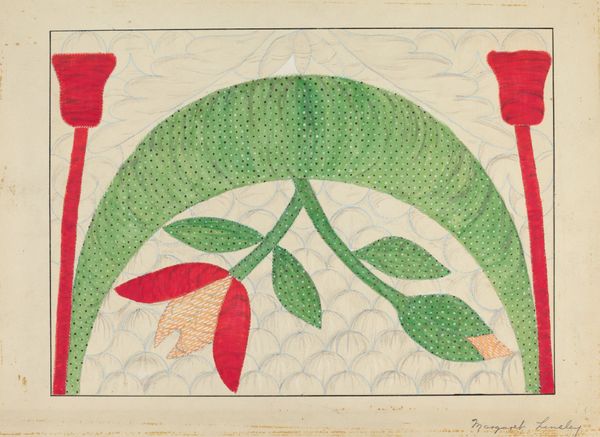
drawing, textile, watercolor
#
drawing
#
water colours
#
textile
#
watercolor
#
geometric
#
abstraction
#
watercolor
Dimensions: overall: 36.2 x 28.2 cm (14 1/4 x 11 1/8 in.)
Copyright: National Gallery of Art: CC0 1.0
Curator: Here we have Mabel Ritter’s “Chair Seat,” a textile and watercolor piece dating from around 1937. I find the texture immediately striking, the way the colors create an almost pixelated effect. It feels both antiquated and modern at once. Editor: Yes, there's something so visually arresting about its grid-like composition, a sort of structured fragmentation. It’s built from many tiny, individual squares, creating this cohesive design, like a digitized flower arrangement blooming out from a woven fabric. The deep reds and greens against that muted background create a rather lovely tension. Curator: The materials chosen add another layer. By using both watercolor and textile techniques, Ritter is blending artistic categories, moving across distinct media that have separate values in her socio-historical context. Chair coverings from that era served as decorative purposes but with very real social function, like communicating status or skill. The integration of something handmade reflects personal and social histories intertwined, don’t you agree? Editor: Absolutely, though I also find the tension of the almost digital-like breakup into squares, so curious. Perhaps Ritter explored how formal structures allow us to interpret forms or represent nature by simplifying elements in it. Is the abstraction leading towards symbolism? Curator: It is very interesting you suggest that. Geometric shapes can often be connected with particular historical aesthetics from this time, yet abstraction pushes art's boundaries of recognition. There seems something in particular here by choosing flower imagery—an interesting reference or nod, wouldn't you say? Editor: A nod, yes. The interplay creates a push and pull between representation and pure form. Curator: Examining "Chair Seat," Ritter asks us to contemplate the intersection of nature and structure in novel ways. I'll think differently now every time I see upholstery of that era! Editor: Yes, seeing the materiality and the thought behind the shapes gives much more resonance to familiar scenes. A fascinating convergence that provides for unexpected art experiences, Mabel Ritter's piece.
Comments
No comments
Be the first to comment and join the conversation on the ultimate creative platform.
